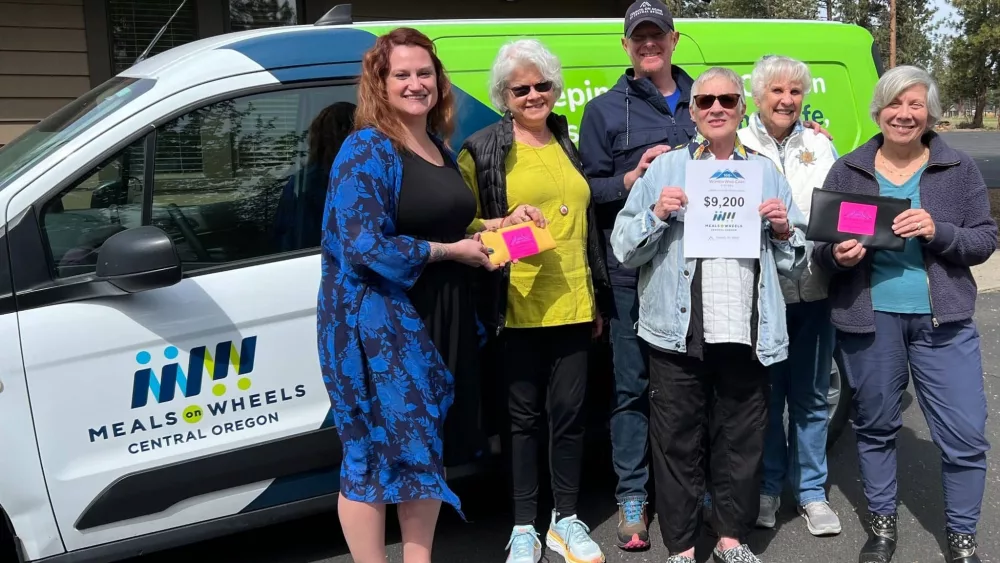From November 10–19, 2022, the Oregon Values and Beliefs Center conducted a statewide survey of Oregonians’ values and beliefs about Oregon’s forests. A description of the methodology used for the research is provided below.
The question numbers in this document correspond with the accompanying documents (Q1-62A). Due to rounding, the percentages reported below may not add to 100% or compare exactly to the percentages for the same question in the annotated questionnaire or tabs.
Included below for selected questions are noteworthy subgroup variations for BIPOC/white, age, urban/rural, education, gender, and households with and without children.
OVBC surveys currently use aggregated data to analyze the opinions of BIPOC residents in comparison to the opinions of residents who identify as white and not another race. BIPOC residents are not a monolith; the grouping represents a wide diversity of races and ethnicities. The findings included in this memo should not be construed such that all people of color are believed to share the same opinions. Disaggregated race data will be provided when sample sizes permit reliability.
For survey full question wording, all statistically significant subgroup findings, and respondent quotes, readers are encouraged to refer to the accompanying three documents: (1) annotated questionnaire, (2) crosstabulations document, and (3) verbatim written responses spreadsheet.
Oregon Values and Beliefs Center (OVBC): This research was completed as a community service by the Oregon Values and Beliefs Center. OVBC is an independent and non-partisan organization and an Oregon charitable nonprofit corporation. Representative OVBC projects include opinion research about race-based crimes for the Asian Health and Service Center, as well as research about early childhood education and the cost of childcare for the Children’s Institute.
KEY TAKEAWAYS
State Forest Management
- Balancing environmental benefits—especially clean water—with the economic benefits of forestry continues to resonate with Oregonians.
- Oregonians are united in their concern about future access to clean water. Nine in ten express concern that access to clean water is not guaranteed for future generations.
- Less than a majority of Oregonians believe forests are well-managed and this may be a decline since 2019.
- Rural residents, men, and those 30 or older are all more critical of state forest management, compared to their peers. Residents in each of these three demographic groups are also notably less likely to say they don’t know enough about the issue to answer.
Involvement and Communications
- Many residents would like to learn more about forests in Oregon, especially younger people 18–44 and urban residents.
- About one in three residents would be open to engaging more directly through a committee on forest policy in Oregon. Those most interested include men and Oregonians under 45.
STATE FOREST MANAGEMENT
General Forest Values and Beliefs
- A majority of Oregonians believe all the benefits bestowed by the state’s forests are important with environmental benefits considered most important (Q15-23A). (GRAPH ATTACHED, SFMQ15-23A)
“Logging is hugely important for maintaining our forests and lessening the pollution-causing forest fires. It also is of vital importance for sustaining our housing and manufacturing markets, as well as creating vital jobs and economies for small-town and rural communities.”
Man, age 30–44, Linn County, White
“Environmental concerns, at this point, have to outweigh economic development. Without the environment, we have no economy.”
Woman, age 45–54, Multnomah County, White
“Logging trees can be balanced with planting more. Trees get old and sick, use them productively.”
Man, age 55–64, Clackamas, Asian
“Jobs from tourism need to supplant jobs from cutting timber, and timber harvests should be halted on all public land.”
Nonbinary or gender nonconforming person, age 65–74, Washington County, Other race or ethnicity
- Nearly nine in ten Oregonians are concerned about access to clean water in the future (Q51).
- Urban residents are much more concerned about future access to clean water than rural residents.
- Concern about access to drinking water rises steadily across age groups, with people 75 and older expressing the most concern.
- Women are somewhat more concerned about clean water in the future than men.
- Seven in ten Oregonians believe climate change is affecting Oregon forests (Q52).
- Eight in ten residents with a college degree believe climate change is affecting forests in Oregon, compared to six in ten residents with a high school education.
- Eight in ten Oregonians living in urban areas, compared to six in ten in rural areas, believe climate change is affecting Oregon forests.
Forestry Management Priorities
- Oregonians say it is most important that state forest management prioritizes water quality and protects habitat to conserve biodiversity (Q39-44). (GRAPH ATTACHED, SFMQ39-44)
“While I placed recreation last, it is only because the other needs are urgent.”
Woman, age 65–74, Clackamas County, White
“Clearcutting, using herbicides, and then replanting single species is considered management—as is selectively harvesting and allowing natural mixed species growth. These are two completely different ways to manage our forests, and people need to understand the difference and why the differences matter.”
Woman, age 55–64, Lincoln County, White
“Replant, replant, replant.”
Nonbinary or gender nonconforming person, age 30–44, Lane County, race not specified
“It is sad people are doing this to trees and it’s wrong.”
Man, age 18-29, Washington County, Black or African American
- Oregonians’ priorities are the same when it comes to the management of privately-owned forests (45-50). (GRAPH ATTACHED, SMFQ45-50)
“These are the priorities I would like to see but if the land is privately owned, I’m not sure that my priorities matter.”
Man, age 55–64, Multnomah County, White
“While it’s important and acceptable to insist that private forest land be managed for environmental benefits, that means that urban areas need to accept similar restraints, e.g., no more “natural” gas hookups and carbon taxes on fossil fuels.”
Man, age 75+, Washington County, White
“Clear cutting should be outlawed. A tree farm does not a forest make.”
Man, age 45–54, Multnomah County, Native Hawaiian or Other Pacific Islander
“Difficult to balance the rights of the landowner with what’s good for the community/world.”
Woman, age 18–29, Deschutes County, White
Job Performance
- About one-third of residents say that federal, state, and privately-owned forests are managed well (Q35–37).
- Notably, more than one in five residents don’t know enough about federal, state, and private forest management to have an opinion. The lack of information is relatively high across demographic groups. (GRAPH ATTACHED, SMFQ35-37)
- Rural residents and those 65-74 years of age are the most critical of state forest management. Approximately half of the Oregonians in these groups do not agree state forests are well-managed (Q36).
- Conversely, nearly half of residents under 30 believe state forests are managed well.
- BIPOC residents—who skew younger—have more optimistic opinions, as do residents with school-aged children at home, who tend to be middle-aged or younger.
- Rural residents’ opinions on whether the state manages forests well are nearly identical to those of people who live in rural-changing-to-suburban areas (with 35% and 37% who say yes).
- Urban and suburban residents also share nearly identical views (41% and 42% agree state forests are managed well).
Timber Harvest
- Oregonians are split as to whether federal and state forests should be logged less often, more often, or the same amount (Q13, Q14).
- Even splits across categories sometimes indicate a lack of knowledge about a subject. The high proportion of people who say they don’t know enough to have an opinion (24% and 25%) suggests lack of knowledge may be an issue even for those with opinions.
- A plurality of urban residents (about one in three) say that both federal and state forests should be logged less often. Meanwhile, a plurality of rural residents (also about one in three) say they should be logged more often. (GRAPH ATTACHED, SMFQ13-14)
- The vast majority of Oregonians say we don’t have to choose between having healthy forests and a healthy economy (Q53).
- At least six in ten residents in every demographic group subscribe to the idea that both the economy and forests can thrive in Oregon.
- The groups most likely to believe that these outcomes are mutually exclusive are people under 30 and urban residents. In these groups, about one in five residents believe that healthy forests must be the primary focus.
Oregon Tribal Fairness Act
- Six in ten Oregonians think indigenous tribes should manage more forest land (Q38).
- A majority of BIPOC and white residents hold this view, but BIPOC residents are more likely to agree.
- Residents under the age of 45 are also more likely than their older peers to believe that indigenous tribes should manage more forest land.
- BIPOC residents, urban dwellers, and women are the most likely demographic groups to support this idea.
INVOLVEMENT AND COMMUNICATIONS
- Four in ten residents would appreciate more opportunities to learn about and get involved with Oregon’s forests (Q55).
- Half of residents 30–44 would appreciate additional engagement about forests.
- BIPOC Oregonians are especially interested as well.
- Men are more interested than women, and urban residents are more interested than residents of other community types. Rural residents are the least interested.
- A significant subset—three in ten residents—demonstrate interest in serving on committees to help guide state forest policy (Q54).
- The same demographic trends ring true for serving on a committee as learning more about forests, but the differences are often smaller.
- Men remain a good bit more likely than women to express interest in volunteering, and interest wanes as resident age rises.
- There is more interest in volunteering among those with school-aged children in their home, compared to those without.
- Urban residents are more interested than suburbanites or those in rural-changing-to-suburban communities.
PAST RESEARCH
In 2019, research showed that the vast majority of Oregonians preferred managing state forests in a way that prioritizes both environmental protections and economic considerations[1]. Those sentiments are still true today.
In the intervening years, devastating wildfires across the state may be responsible for a marked shift in resident opinions about forest management. Three years ago, more than half of residents rated the management of federal, state, and private forests as good/very good. Today, about four in ten residents agree that forests are managed well. Political debates about forest management, including media coverage and social media influence, may also have played a role in the declining figures.
Although forestry has historically played a significant role in Oregon’s economy, residents continue to find themselves in need of additional information about the industry to form full opinions about forest management. In 2019, about one-quarter of Oregonians described themselves as not very or not at all familiar with the forestry industry. Today, roughly the same proportion of residents need more information to know if forests are managed right.
Opinions of wood products have shifted over the past three years, and Oregonians are now 10 percentage points more likely to prefer wood products as a building material to other products like steel and concrete (61%, up from 50%). This may reflect growing awareness of carbon-intensive materials as well as growing acceptance of products like cross-laminated timber.
Perceptions of the benefits of forest thinning may have declined somewhat over the same stretch of time, or else people today may simply have less awareness of the practice. In 2019, three-quarters of residents said that forest thinning would reduce the risk of wildfire in forests in eastern and southwest Oregon. Today, just 62% say it is acceptable to thin trees (but not the oldest ones) to reduce wildfire fuels. However, an additional 18% say it is neither acceptable nor unacceptable and 12% say they don’t have an opinion. In this data set, an area of the state was not defined.
METHODOLOGY
The online survey consisted of 1,554 Oregon residents ages 18+ and took approximately 15 minutes to complete. Respondents were contacted by using professionally maintained online panels. In gathering responses, a variety of quality control measures were employed, including questionnaire pre-testing, validation, and real-time monitoring of responses. To ensure a representative sample, demographic quotas were set, and data weighted by area of the state, gender, age, and education.
Statement of Limitations: Based on a 95% confidence interval, this survey’s margin of error for the full sample ±2.48%. Due to rounding or multiple answer questions, response percentages may not add up to 100%.






